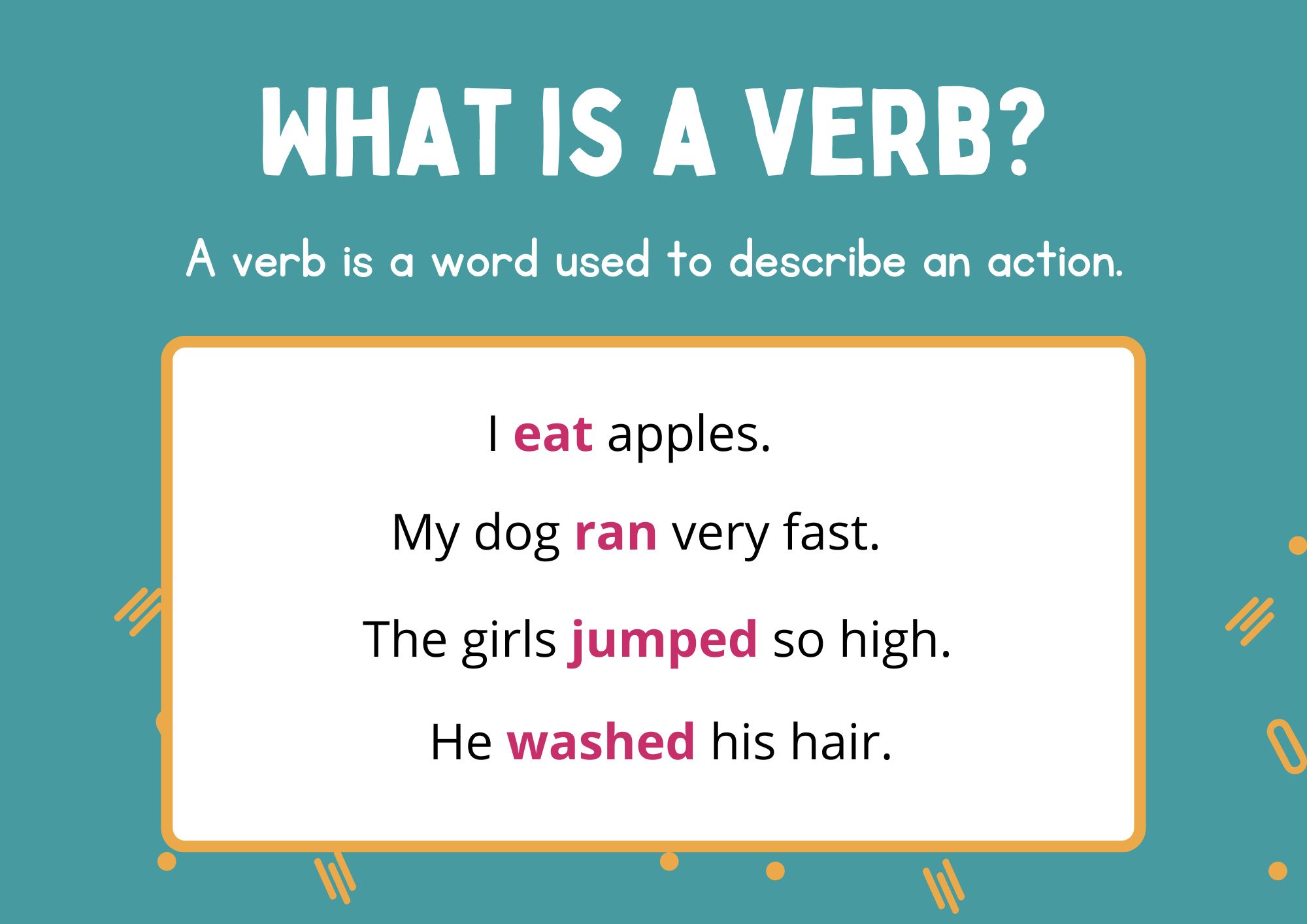“Hey Kids! Welcome to the exciting world of verbs – the action heroes of language! Imagine a world without verbs; it would be like a story without any adventure or a game without any movement. Verbs are the words that bring our sentences to life, making them dance, jump, sing, and so much more! In this article, we’ll embark on a thrilling journey to discover the magic behind verbs, unlocking the secrets of how these words add energy and excitement to everything we say and write. Get ready to explore, learn, and have loads of fun with verbs – the champions of action in the language kingdom!”
Table of Contents
Definition of verb:
A verb is a part of speech that expresses an action, occurrence, or state of being. In a sentence, the verb typically conveys what the subject is doing or the condition it is in. Verbs are crucial for understanding and forming meaningful sentences in a language. They come in various forms, representing actions like “run,” “sing,” or “eat,” as well as states of being like “is,” “am,” or “were.” Essentially, verbs give life and movement to our language, allowing us to convey a wide range of actions and ideas.

what the verbs tell us-
1) What a person or thing is:
Mr.John is a doctor.
The dig is brown.
His shirt is white.
2) What a person or thing has-
Jim has a pet cat.
A chair has four legs.
3) what a person or thing does-
Tommy kicks the ball.
The clock strikes ten.
various types of verb with examples:
verbs are classified in four different ways:
| Auxiliary verb | Principle verb |
| Transitive verb | Intransitive verb |
| Finite verb | Nonfinite verb |
| State verb | Event verb |
Principal Verb (Main Verb):
The principal verb, also known as the main verb, is the central element in a sentence that expresses the main action, state, or occurrence. It is the core of the predicate, providing the primary information about what the subject of the sentence is doing or the state it is in. The principal verb can stand alone in a sentence or be accompanied by auxiliary (helping) verbs to form verb phrases.
Example 1 (Stand-alone principal verb):
- She writes poetry.
In this example, “writes” is the principal verb, and it conveys the main action performed by the subject “She.”
Example 2 (Principal verb with auxiliary verb):
- He is working on a new project.
Here, “is working” is the verb phrase. “Is” is an auxiliary verb, and “working” is the principal verb. Together, they convey the ongoing action of the subject “He.”
Auxiliary Verb (Helping Verb):
Auxiliary verbs, also known as helping verbs, are used in conjunction with the principal verb to provide additional information about the tense, mood, voice, or aspect of the action or state. They assist in forming verb phrases, allowing for more nuanced expressions of time, possibility, obligation, etc. Common auxiliary verbs include “be,” “have,” and “do.”
Example 1 (Helping verb for tense):
- They have completed the project.
In this example, “have” is the auxiliary verb, and “completed” is the principal verb. Together, they form the present perfect tense, indicating that the action of completing the project occurred in the past with a connection to the present.
Example 2 (Helping verb for continuous aspect):
- She is studying for her exams.
Here, “is” is the auxiliary verb, and “studying” is the principal verb. Together, they indicate the ongoing nature of the action, reflecting the present continuous tense.
Auxiliary verbs are crucial for constructing grammatically correct and contextually accurate sentences, providing the necessary information to convey the intended meaning.
Transitive Verb:
A transitive verb is like a delivery superhero! It needs to carry something or do an action to something or someone. It’s like a verb that doesn’t like to be alone; it always needs an object to complete its mission.
Example:
- The cat caught the mouse.
In this sentence, “caught” is the delivery superhero (transitive verb), and “the mouse” is what it caught. The action is not complete until the verb delivers its action to something.
Intransitive Verb:
An intransitive verb is like a solo superhero. It can do its action all by itself; it doesn’t need to deliver its action to someone or something else. It’s like a verb that’s perfectly happy being on its own.
Example:
- The bird sings.
In this sentence, “sings” is the solo superhero (intransitive verb). It’s doing its action all by itself, and it doesn’t need to deliver its action to anyone or anything else.
So, to sum it up, a transitive verb likes to deliver its action to someone or something, while an intransitive verb is happy doing its action all alone! They’re both verbs, just with different ways of doing things.
Finite Verb:
A finite verb is like the captain of a sentence. It shows when the action is happening and who’s doing it. It’s the boss that gives all the important details!
Example:
- The cat is playing with a ball.
In this sentence, “is playing” is the captain (finite verb). “Is” tells us it’s happening right now, and “playing” is the action. The cat is the one doing the action.
Nonfinite Verb:
A nonfinite verb is like a superhero in training; it doesn’t give all the details by itself. It needs a little help from a finite verb or another part of the sentence.
Example:
- The dog loves to run in the park.
In this sentence, “to run” is the superhero in training (nonfinite verb). “Loves” is the captain (finite verb) giving all the details. “To run” is part of the action, but it doesn’t tell us when it’s happening or who’s doing it without the captain’s help.
So, a finite verb is the captain that gives all the important details, and a nonfinite verb is the superhero in training that needs a little help to tell the whole story!
State Verb:
A state verb is like a snapshot of how something is at a certain time. It describes a state or condition, like feelings, thoughts, or appearances. State verbs are like the camera that captures a still picture.
Example:
- The sun shines brightly.
In this sentence, “shines” is the state verb. It describes the state of the sun, capturing how it is at a certain time—brightly shining.
Action Verb:
An action verb is like a video camera capturing movement or action. It shows something happening, someone doing something, or an action taking place. Action verbs are like the camera recording a dynamic scene.
Example:
- The rabbit hops in the field.
In this sentence, “hops” is the action verb. It shows the movement of the rabbit, capturing the action of it hopping in the field.
So, a state verb is like a still picture, describing a condition, and an action verb is like a video, showing something happening or someone doing something. Both help us understand what’s going on in a sentence!



